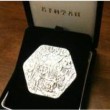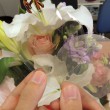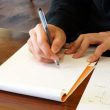How many experiments do you need at the same condition ?
ver 1.2 (revise the URL for ENG PDF, 22 Jun 2021)
ver 1.1 (31 Aug 2019, Minor revise in #4, Number changes in #15-17, Change the question in #15)
ver 1.0 (30 Aug 2019, by nogi)
Answer 20 questions after reading the below URL
“A Beginner’s Guide to Uncertainty of Measurement” (ENG ver.)
You can download the same PDF file at any URLs
https://www.isobudgets.com/pdf/documents/04_NPL_MGPG_No11.pdf
https://www.npl.co.uk/gpgs/corrosion-control-checklist
http://www.demarcheiso17025.com/private/A%20Beginner%92s%20Guide%20to%20Uncertainty%20of%20Measurement%20.pdf
「不確かさの入門ガイド」日本語版
https://www.nite.go.jp/data/000050641.pdf
#1 What is uncertainty of measurement? (pick up a sentence)
#2 What is error? (pick up a sentence)
#3 What is uncertainly? (pick up a sentence)
#4 Can you measure the true value? Please answer with your opinion & reason, referring with “Annex A”.
#5 Please explain “Measure thrice, cut once” (pick up a sentence)
#6 How many readings should you average? (pick up some sentences, considering with “diminishing returns”)
#7 What the spread tells us? (pick up a sentence)
#8 The usual way to quantify spread is standard deviation. Sometimes the quantification is enough by another simple way. What is it? (pick up a sentence)
#9 What is the standard deviation? (pick up sentence from “Annex A”)
#10 How many readings do you need to find an estimated standard deviation? (pick up sentences)
#11 Where do errors and uncertainties come from? (pick up all the sentences about the seven origins.)
#12 Please explain the “random” or “systematic” uncertainty in any measurement. (pick up all the sentences)
#13 Statistical analysis is not uncertainty analysis. Please explain the reason by picking up sentences from “5.3 What is not a measurement uncertainty?”
#14 No need to your answer. If you learn more, let’s read “6.1, 6.2, and 9.1”
#15 Question about “Measure thrice, cut once” again. Please explain what will be happened when you make two or three measurements. (pick up sentences)
#16 Question again. How many readings should you average?
#17 Question again. How many readings do you need if you want to find an estimated standard deviation?
#18 Question again. Please pick up the seven origins of errors and uncertainties
#19 For your research, which is better choice of “reducing the errors and uncertainties” or “calculation the average or standard deviation”? Please your opinion after reading of “Abstract” & Chapter 11″.
#20 Final question. How many readings will you have in your experiments at the same condition? Please three answers. (TIP: #15-17)
© Department of Functionalized Natural Materials ISIR, Osaka University







